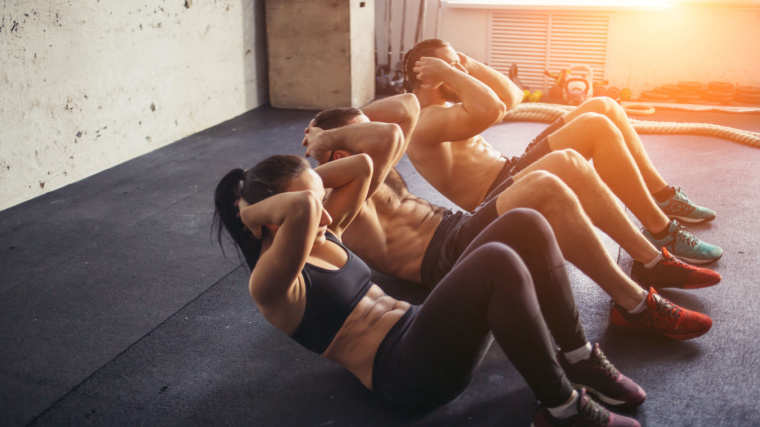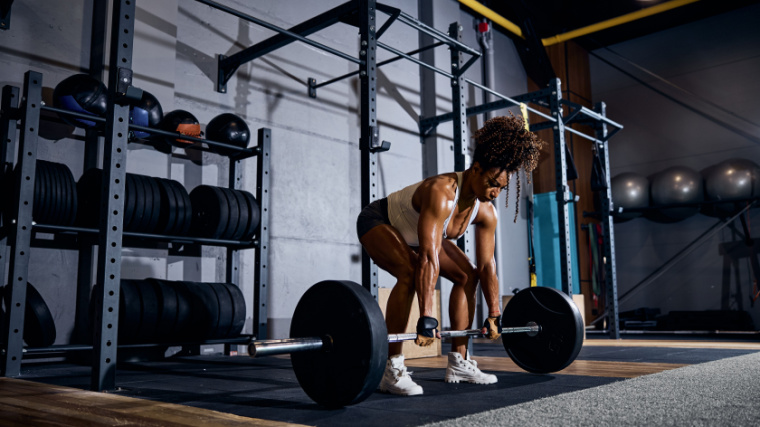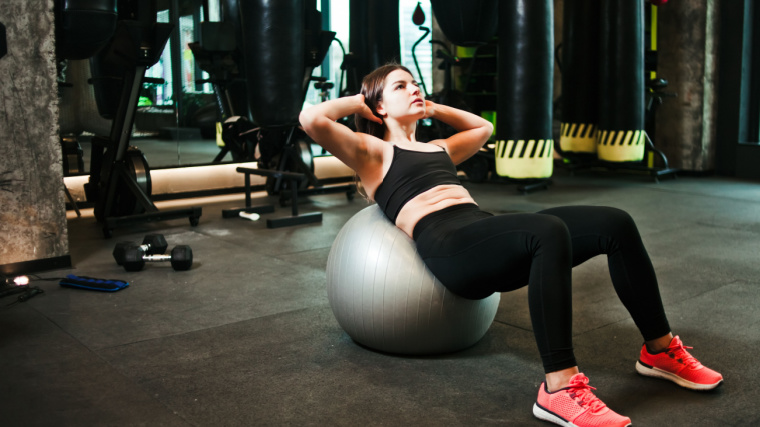You’re struck by a whirlwind of information when you’re just getting started at the gym. Free weights, cable machines, workout programs, and recommendations pour in from all directions. One consistent piece of advice is that your core is the foundation for all future progress — building a strong core translates into heavier, safer lifts down the line. But where do you begin?

Abdominal crunches sound simple, but are they appropriate for a beginner? A plank looks like it belongs in your program, but how do you progress? It’s daunting to pin down exactly which direction to take your training. If you’re feeling lost, here is the ultimate beginner core workout.
Beginner Core Workout
Your core truly is one of the most important aspects of your training. Without it, there’s a strong possibility that you’ll plateau long before reaching your true strength or muscle gain potential. With that in mind, your status as a gym newbie allows you to set yourself up for success with core workouts and the best ab exercises from day one.
Your core is responsible for neutralizing your shoulders, hips, and perhaps most importantly, your spine. When you’re completing any number of exercises, your ability to resist the weight moving you out of position is the main responsibility of your core.

[Read More: The 15 Best Home Gym Machines]
This means that your core is at the…core… of all the strength-building you’re going to be learning in the coming months. When you want to increase strength enough to deadlift 500 pounds one day, you won’t just be learning to hip hinge: you’ll need tremendous core strength.
Here’s how to get started.
Workout Directions
Training your core isn’t just about figuring out how to get abs. You’ll want to build up your core from all angles to achieve maximum strength (not to mention muscle hypertrophy).
[Read More: Build Ridiculous Core Strength With the Toes to Bar]
Resisting movement will be the focal point of your beginner core workout. Choose exercises that challenge you from all angles, incorporating flexion, extension, and rotation of your torso. Leave no stone unturned and you’ll be prepared for anything training throws at you in the future.
- Paused Abdominal Crunches: 2 x 15 repetitions
- Paused Wood Chopper: 2 x 12 repetitions per side
- Side Plank: 2 x 30 seconds per side
- Front Plank: 2 x maximum time
Coach’s Tip: Fully exhale and hold your core in a peak contraction for one second on each repetition of paused abdominal crunches and paused wood choppers.
You can perform planks with one or both knees on the ground to start if need be. Just make sure you’re contracting your abs, sides, glutes, and quads to maintain a full brace.
How Often to Train Your Core
Exercise frequency is a big part of programming any muscle group. How often you hit the targeted muscle should reflect your ability to fully recover (no soreness or lingering loss of strength). This usually pans out to be about every two or so days, depending on how hard you go.
Another thing to keep in mind however is how much your core is impacted by other exercises within your program. Big full-body compound exercises such as back squats, front squats, deadlifts, or overhead presses also heavily rely on your core. Weaving a direct core workout into your program should avoid overlapping these major barbell exercises to maximize performance.

[Read More: The 18 Best Pre-Workouts, RDN-Approved (Personally Tested)]
As you progress (particularly with free weight exercises), plan out where you pocket your direct core work. Combining these two pieces of advice, tuck your core workouts on a day where you are more specifically training your cardio exercises or single-joint movements.
Depending on your training schedule, you can also incorporate them into the end of a big leg day so that your muscles and legs can recover at the same time. Alternatively, place your core workouts on their own day, allowing yourself to fully recover before you need your midsection at full power once again.
The Benefits of Core Training
Training your core is one of the consistent pieces of advice you’ll receive across most workout plans. That’s because it’s fantastic for improving your performance in heavier barbell moves, helps improve your abdominal aesthetics, and establishes both a ton of mobility and stability.
Core Strength
Core strength is about so much more than your prospective six-pack. It’s about your ability to resist being shoved out of position. Your core is responsible for keeping your torso locked in a neutral position during heavy lifts, meaning that you won’t get crushed and folded over under a loaded barbell.
As your leg exercises, arm exercises, and back exercises progress, your major muscle groups will gain serious strength. Along with it, your core will need to build as the weights go up. However, a common issue is that your arms, legs, or back outpace your core.
[Read More: Best Greens Powder]
Training the core directly with strategic ab workouts or accessory exercises is a fantastic way to keep everything balanced. Gain core strength that keeps up with your fitness goals by incorporating core training throughout your programs.
Aesthetics
Muscles grow best when they are directly targeted, and there’s no better way to target your abdominals than by incorporating core exercises. Although the primary result you’d expect from core training is a strong midsection, along the way you may develop some visible abs. If that’s a goal of yours, combining core and cardio workouts alongside nutritional planning can help.
Stability and Mobility
One key aspect of core training is finding a balance between resisting movement and intentionally producing movement. Core workouts are going to place a huge emphasis on neutralization, which means holding your position against external resistance.
However, staying mobile and maintaining your ability to flex, extend, or rotate through all ranges of motion is another big benefit of ab training. This translates into your core stability leading to greater mobility throughout the rest of your body.

[Read More: Best Creatine Supplements]
Utilize exercises that have a defined concentric and eccentric component (parts that you intentionally move). Abdominal crunches, especially on an exercise ball, or wood choppers come to mind. Concentric work here helps you maintain your ability to rotate, while controlled eccentric work provides a loaded stretch.
The Anatomy of Your Core
- Rectus Abdominis: This is your six-pack muscle group. It helps you flex your spine as you curl through an abdominal crunch.
- External Obliques: The external oblique is the muscle found on either side of your midsection. It runs more horizontally than your rectus abdominis and helps produce rotation.
- Internal Obliques: Your internal obliques are a very similar muscle group to your external obliques. They sit just underneath your external obliques and also help with rotation.
- Transverse Abdominis: Your transverse abdominis (TVA) is your bracing muscle. While your core produces a brace as a unit, your TVA is particularly responsible for keeping things locked up.
Your Takeaways
Training your core can be as simple as hitting a few planks or as complex as bracing through barbell exercises. Your goal, starting fitness level, and long-term program should help you decide what you need to weave into a unique workout regimen. As long as you can control your midsection appropriately, you’ll be all set.
- Your core is all of the muscles that compose your torso, with particular emphasis on the rectus abdominis, internal and external obliques, and transverse abdominis.
- Training your core using spinal flexion, extension, and rotation strength exercises helps keep you stable enough to move heavy loads.
- Neutralizing your torso against exercises that challenge spinal flexion, extension, or rotation helps carry over to major exercises like squats.
- Beginner core training will teach body awareness and build your capacity for future training.
- Core workouts should be programmed once every 48 hours or so to allow full recovery and peak performance.
And Begin
Your core is a pivotal part of your success in the gym. As a beginner, your goal should be to build your skill, baseline strength, endurance, and ability to move through all directions. Your beginner core workouts are fantastic tools to ensure you start your entire workout program on the right foot. As you progress, your core workouts do as well.
[Read More: Learn the Cable Crunch to Build Yourself a Strong, Supportive Core]
From planks and crunches to deadlifts and squats, your core remains a central part of your programming. Train consistently from the very start and you’ll never need to worry about your middle being the weak link ever again. Soon, you won’t feel like such a beginner anymore.
Featured Image: UfaBizPhoto / Shutterstock